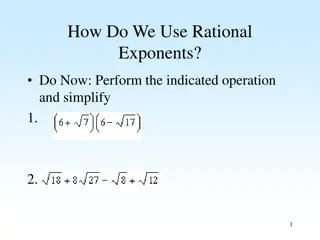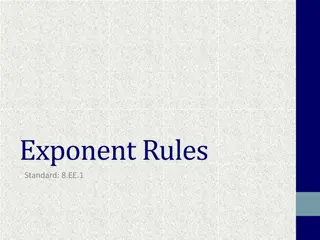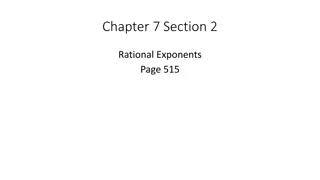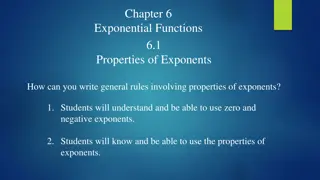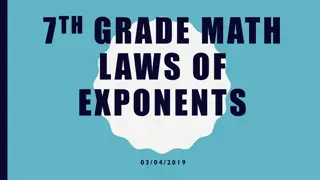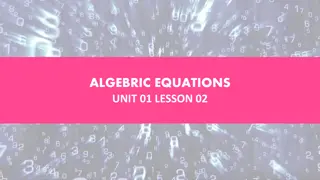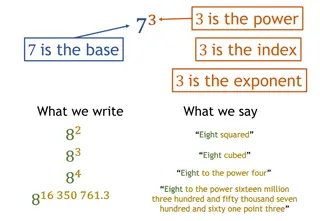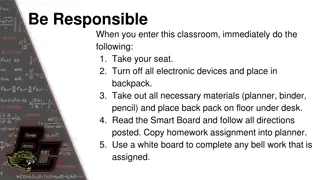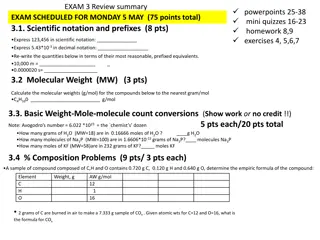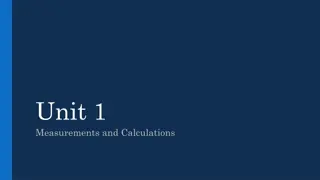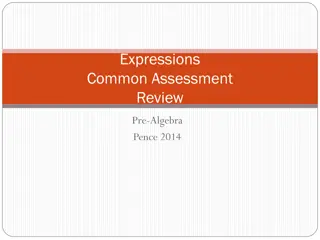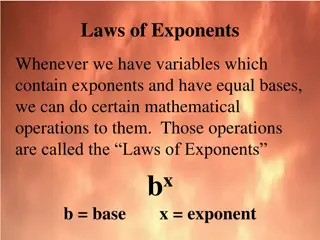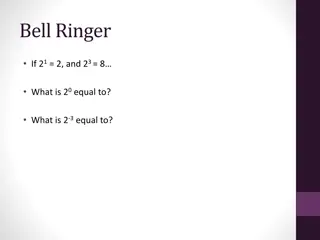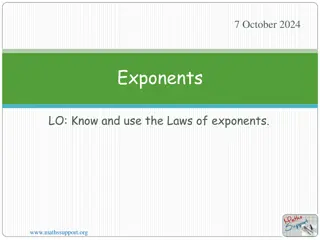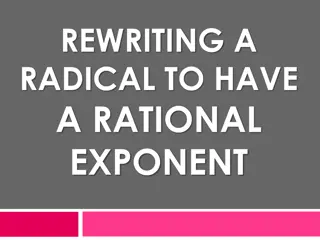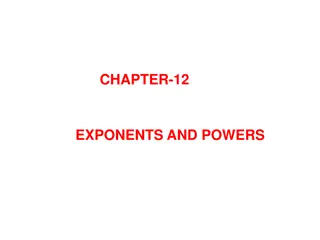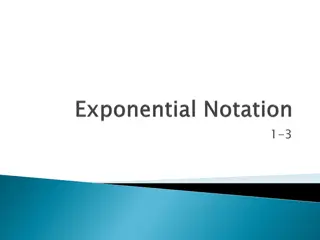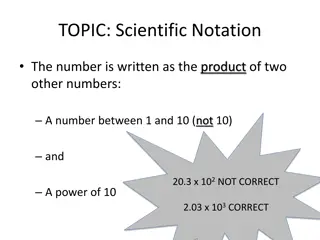Understanding Exponents: Simplifying Expressions and Scientific Notation
Explore the concept of exponents, learn how to simplify expressions with negative exponents, and delve into scientific notation for efficiently representing large numbers. Discover the basics of exponents, operations involving exponents, and the application of scientific notation in various disciplines. Enhance your mathematical understanding with clear explanations and examples provided in this educational content module.
Download Presentation

Please find below an Image/Link to download the presentation.
The content on the website is provided AS IS for your information and personal use only. It may not be sold, licensed, or shared on other websites without obtaining consent from the author. Download presentation by click this link. If you encounter any issues during the download, it is possible that the publisher has removed the file from their server.
E N D
Presentation Transcript
The contents of this content module were developed by special educator Bethany Smith, PhD and validated by content expert Drew Polly, PhD at University of North Carolina at Charlotte under a grant from the Department of Education (PR/Award #: H373X100002, Project Officer, Susan.Weigert@Ed.gov). However, the contents do not necessarily represent the policy of the Department of Education and no assumption of endorsement by the Federal government should be made
What is an exponent? An exponent represents the number of times the base is multiplied Therefore, 24 = 2 2 2 2 If the exponent is negative, then you must move the base to the other side of the fraction line Therefore 2-4 = If a number does not include an exponent, it is understood the exponent is 1. The contents of this content module were developed by special educator Bethany Smith, PhD and validated by content expert Drew Polly, PhD at University of North Carolina at Charlotte under a grant from the Department of Education (PR/Award #: H373X100002, Project Officer, Susan.Weigert@Ed.gov). However, the contents do not necessarily represent the policy of the Department of Education and no assumption of endorsement by the Federal government should be made
Operations with exponents: Examples Don t forget order of operations when simplifying the following expressions Step 1: Simplify the exponent Step 2: complete simplification by multiplying Don t forget the negative sign The contents of this content module were developed by special educator Bethany Smith, PhD and validated by content expert Drew Polly, PhD at University of North Carolina at Charlotte under a grant from the Department of Education (PR/Award #: H373X100002, Project Officer, Susan.Weigert@Ed.gov). However, the contents do not necessarily represent the policy of the Department of Education and no assumption of endorsement by the Federal government should be made
Scientific Notation One common way exponents are used across curricular areas is using scientific notation Scientific notation is a efficient way to write large numbers For example, the distance from Earth to the sun is 93 million miles 93 million =93,000,000 = 9 x 10,000,000= 9x 107 The contents of this content module were developed by special educator Bethany Smith, PhD and validated by content expert Drew Polly, PhD at University of North Carolina at Charlotte under a grant from the Department of Education (PR/Award #: H373X100002, Project Officer, Susan.Weigert@Ed.gov). However, the contents do not necessarily represent the policy of the Department of Education and no assumption of endorsement by the Federal government should be made
Scientific Notation contd. 3.8 = 3.8 x 100 In this example, no exponent was listed 0.0041 = 4.1 x 0.001 = 4.1 x = 4.1 x 10-3 In this example, the exponent is negative The contents of this content module were developed by special educator Bethany Smith, PhD and validated by content expert Drew Polly, PhD at University of North Carolina at Charlotte under a grant from the Department of Education (PR/Award #: H373X100002, Project Officer, Susan.Weigert@Ed.gov). However, the contents do not necessarily represent the policy of the Department of Education and no assumption of endorsement by the Federal government should be made
Which way with the decimal? One of the most common mistakes students will make is moving the decimal place the wrong way when simplifying terms with exponents If the exponent is positive, the decimal moves to the right 103=1000.0 If the exponent is negative, the decimal moves to the left 10-3=0.001 The contents of this content module were developed by special educator Bethany Smith, PhD and validated by content expert Drew Polly, PhD at University of North Carolina at Charlotte under a grant from the Department of Education (PR/Award #: H373X100002, Project Officer, Susan.Weigert@Ed.gov). However, the contents do not necessarily represent the policy of the Department of Education and no assumption of endorsement by the Federal government should be made
Ideas for application Use manipulatives where students can physically move the decimal Always include multiple representation of numbers (e.g., 0.001= ) Create personally-relevant word problems The contents of this content module were developed by special educator Bethany Smith, PhD and validated by content expert Drew Polly, PhD at University of North Carolina at Charlotte under a grant from the Department of Education (PR/Award #: H373X100002, Project Officer, Susan.Weigert@Ed.gov). However, the contents do not necessarily represent the policy of the Department of Education and no assumption of endorsement by the Federal government should be made
Making connections Simplifying expressions with exponents addresses the middle and high school Core Content Connectors of 6.NO.1i1 Identify what an exponent represents 6.NO.1i2 Solve numerical expressions involving whole number exponents 8.NO.1i1 Convert a number expressed in scientific notation up to 10,000 H.NO.1a2 Explain the influence of an exponent on the location of a decimal point in a given number H.NO.2c1 Simplify expressions that include exponents H.NO.2c2 Rewrite expressions that include rational exponents The contents of this content module were developed by special educator Bethany Smith, PhD and validated by content expert Drew Polly, PhD at University of North Carolina at Charlotte under a grant from the Department of Education (PR/Award #: H373X100002, Project Officer, Susan.Weigert@Ed.gov). However, the contents do not necessarily represent the policy of the Department of Education and no assumption of endorsement by the Federal government should be made


